Tactics to stop feeling ignored when talking to Leadership (so we can get our Localization ideas greenlighted)
Conversations with executives, decision makers, and leadership are uncomfortable. Over time, by doing them and facing them, they start to go a bit better. It’s not that they stop being uncomfortable, because these are important conversations, depending on the decision we are hoping to influence, so the butterflies in our stomach never fully go away. But we can control them a bit more. That would be phase 2 of how to get the C-suite buy-in. But before that, there is another one: getting over the feeling of being ignored. That feeling is uncomfortable… and it hurts.
I remember one of my first meetings as a localization team leader. I needed greenlight for a localized test automation program. I prepared a presentation and had to present in a meeting where my topic was part of the day’s agenda. I explained what we needed, in detail, maybe too much detail, because looking back now, I ask myself why I went so deep into it. At that time, I thought it was essential and even saw it as unprofessional not to have all the data with me and explain everything. With the perspective that time gives you, I understand that executives need to know that there are metrics supporting our ideas and requests, but we don’t need to show all of them at once. That’s going to test their patience if we try to explain everything. They expect us to do the work of summarizing and drawing the conclusions without having to show them all the data along the way.
That proposal didn’t move forward, but what was even worse was that I never heard back on that. They didn’t consider any of my recommendations, and that’s something I promised myself I would improve. Years have passed since then, and it’s not that I have the secret recipe of how to get the buy-in, but I’ve been in so many meetings with executives and senior leadership since then that little by little I’ve built 5 skills/tactics that I believe would have been very helpful for that version of Miguel who asked for greenlight for that test automation program years ago.
Below is a list of what I’ve seen work and what doesn’t when we talk to the C-suite about localization topics.
Click HERE to download the image
1.- Answer the so-what?
As Localization professionals, it’s easy to assume that the value of what we do is obvious, after all, we ensure international users get a great experience in their own language. But when speaking with executives, simply stating what we did or what we plan to do often isn’t enough. The real challenge is making it relevant to them. When we present ideas or updates, we need to go beyond facts and explain why they matter in a broader business context. That’s where answering the “So what?” becomes essential. It’s the bridge between doing the work and getting buy-in for it. Let’s see this with an example.
Answer the “So What?” (LQA Edition)
We love our quality metrics, LQA pass rates, error counts, and severity levels. We love to talk about quality, even though we don’t agree on what quality means in our industry . But we like to talk about quality metrics. The problem is that when you’re in front of a C-level executive, saying “Our LQA score is 98%” is not enough.
They’ll think: So what?
Here’s how to make it land:
Don’t just say:
“We’ve improved our LQA pass rate to 98%.”
Better say something like:
“We’ve improved our LQA pass rate to 98%, which means fewer localization bugs make it into the app. That saves dev teams time, reduces back-and-forth fixes, and helps us release on schedule.”
By using a so-what approach directly linked to faster time to market, it’s more likely that our ideas will land better. Or another example may even work better…. Let’s imagine what we want is to connect it directly to revenue. Then this hypothetical so what scenario would sound like:
“With a 98% LQA pass rate, our localized content is more polished from day one, leading to better user reviews and retention in international markets, directly impacting growth outside English-speaking countries.”
This works very well because the C-suite isn’t interested in quality for quality’s sake. They want to know what it enables: lower costs, faster delivery, better user experience, and stronger market performance.
2.- Have metrics, just in case
As I said in the intro of my post, it took me time to understand that having metrics and showing all the metrics are two different things.
It’s true that executives want and need to know there are metrics that support what we’re saying. But that doesn’t mean they want all the details. Actually, it’s more the opposite. They want us to help them digest the information because they don’t have to be familiar with every detail of our work.
For example, if you’re recommending support for two new languages, don’t start by listing surveys, spreadsheets, test results, feedback logs, bug reports, localization velocity charts, or side-by-side comparisons of competitor language coverage. That kind of information overload can make the message feel buried.
Instead, focus on the conclusion:
“There’s strong user demand and clear business potential in these two markets. With a quarter million euros investment in localization, we can grow our reach and improve user satisfaction.”
Executives want to know the data is solid, but they expect you to summarize it and tell them what decision to make. Always have support for your recommendation, but never expect data alone to make your case.
3.- Choose the right timing
Timing matters just as much as the message itself. Even if your localization proposal is strong, bringing it up when the company is dealing with multiple fires like a major product delay, reorg, or cost-cutting phase can mean it gets ignored or deprioritized. If you want the C-suite’s full attention, choose your moment wisely. Look for a window when they’re thinking about growth, entering new markets, or improving player experience. Your message will land better when it connects to what’s already on their radar. A well-timed ask is more powerful than a perfectly crafted one delivered at the wrong moment.
4.- Get better at storytelling with data
As we learn in Toastmasters, a pitch using storytelling tactics will always work better than the typical business presentation. A good story grabs attention, it’s more memorable, and for that reason it’s worth thinking: what is the story I want to tell in my presentation? When you think about what story to tell, take a moment to ask yourself: What’s the big picture? What will this localization effort actually change for people?
Instead of just saying, “We need to add Arabic,” tell them what that means:
“Right now, users in the MENA region struggle to enjoy the app because the UI isn’t adapted, and that’s causing frustration and drop-off. Localizing into Arabic would make them feel seen and valued, and open the door to a loyal user base in a fast-growing market.”
Use storytelling to make your ask more human. Help them see the real users, the potential reach, and the long-term impact. When executives can picture the outcome, they’re more likely to support the path to get there.
5.- Next steps…
Don’t end your conversation with executives by just hoping they’ll follow up. Make it easy for them to take action. Always leave clear next steps: who needs to do what, by when, and what support you need to move forward.
For example:
“If approved, we’ll start with a pilot for two languages using existing tools and vendors. We’ll report back in six weeks with early impact data.”
A simple summary will work. Executives are busy. If you don’t guide them to the next step, your great idea might get lost in the shuffle. A clear path forward shows we’re making a recommendation and we’re ready to lead the execution.
Final thoughts
These 5 ideas are not a magic formula. They won’t make C-suite conversations suddenly easy, and they won’t guarantee greenlight every time. But they do help us show up better. They help us prepare with intention, speak with clarity, and build stronger alignment between our localization goals and the company’s priorities. When I think back to that first meeting as a new team leader, where I felt unheard and overwhelmed by the need to prove everything, I realize how much I’ve learned over the years. I’ve learned that saying less can mean more. That timing matters. That stories stick. And that executives don’t just need information, they need direction
Until next week, and all the best communicating your ideas!
@yolocalizo

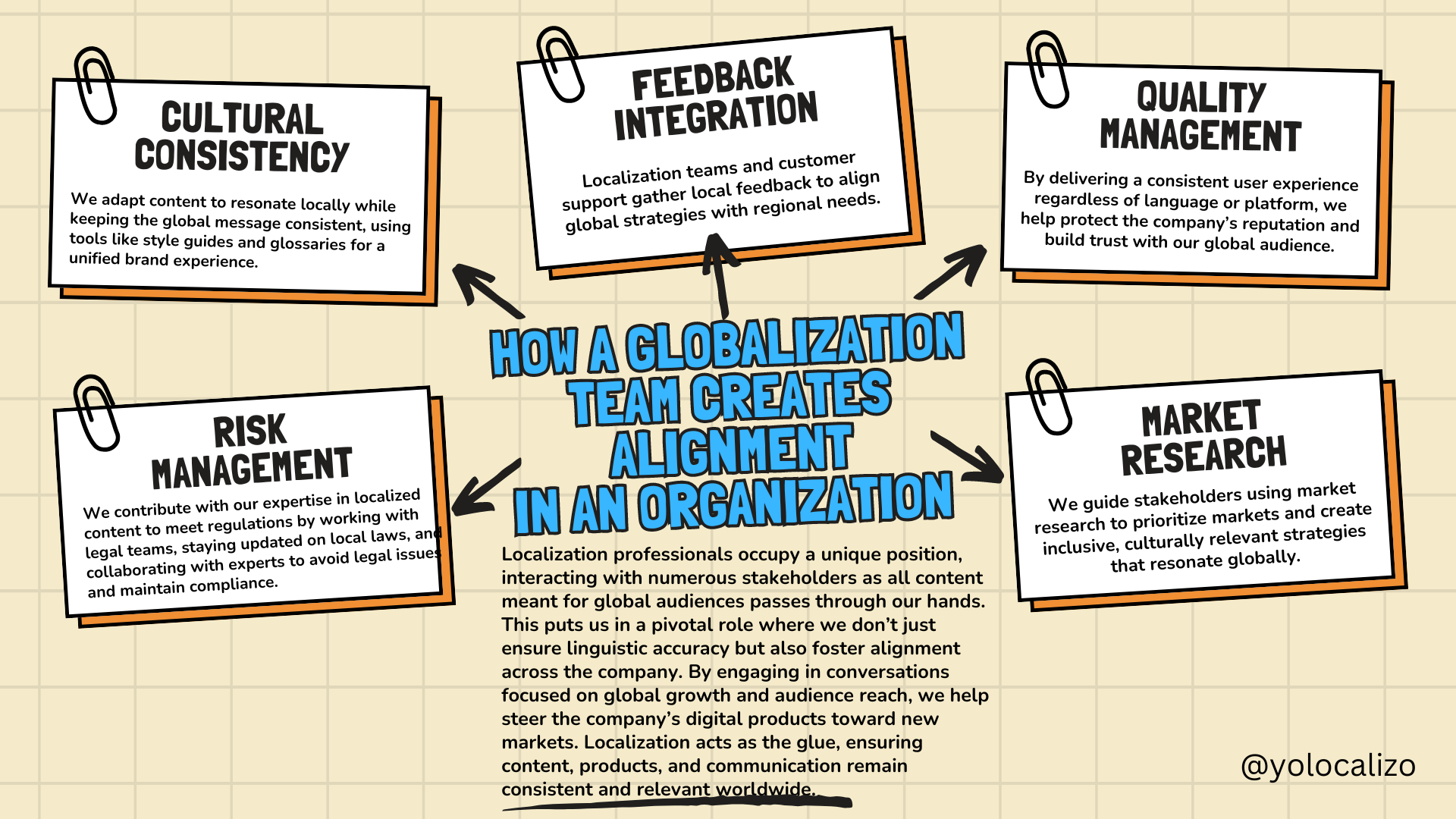
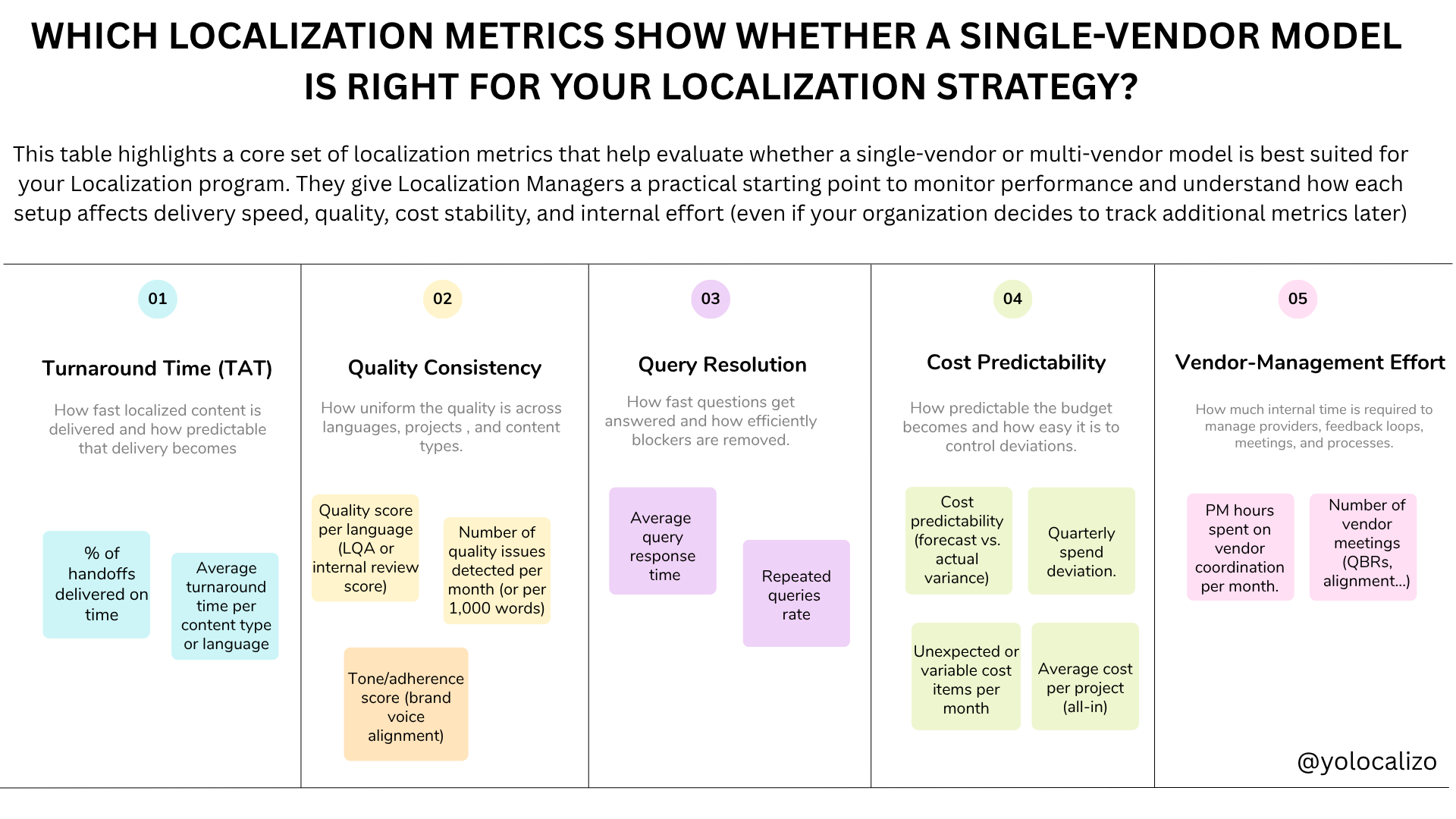




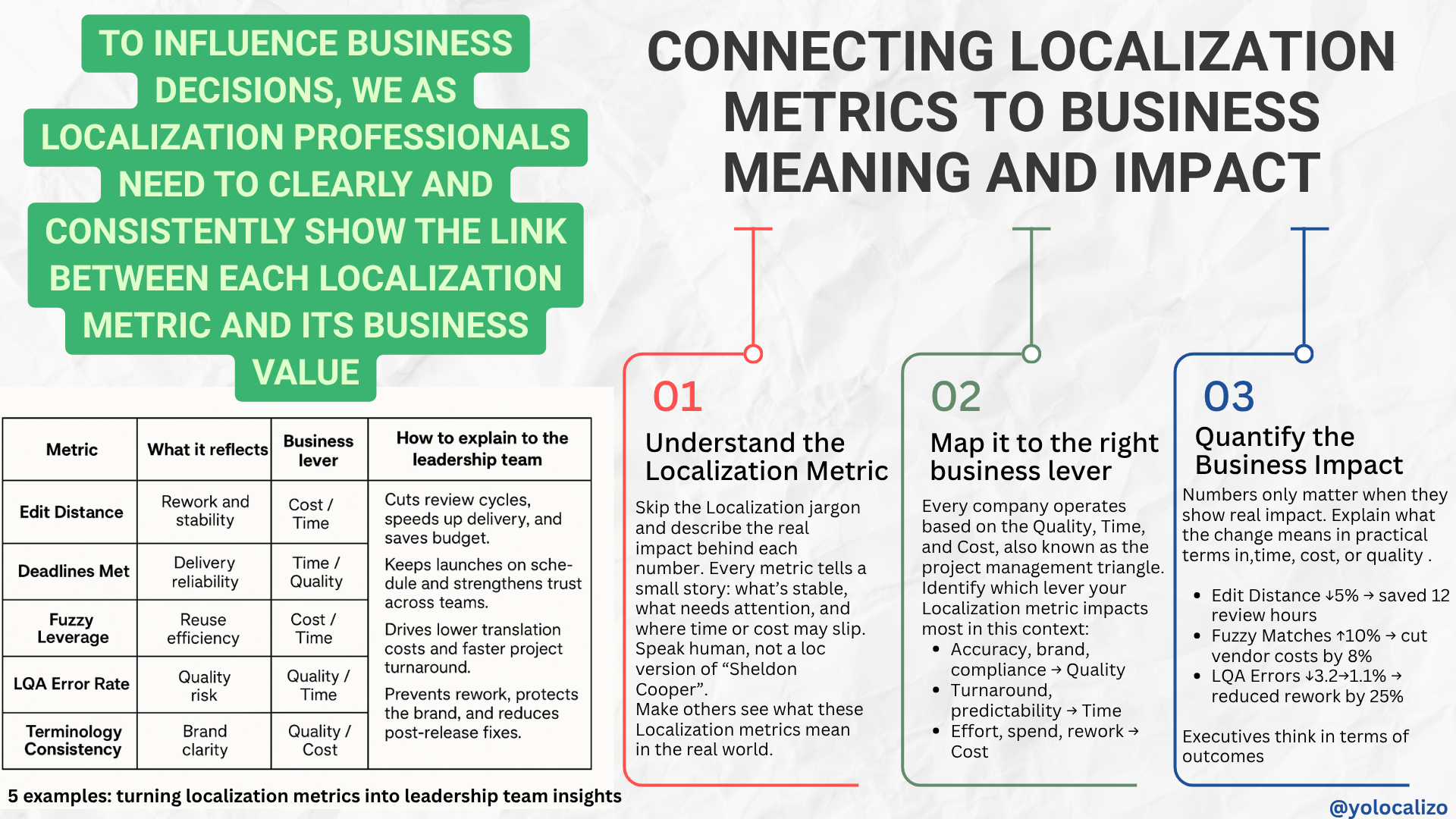




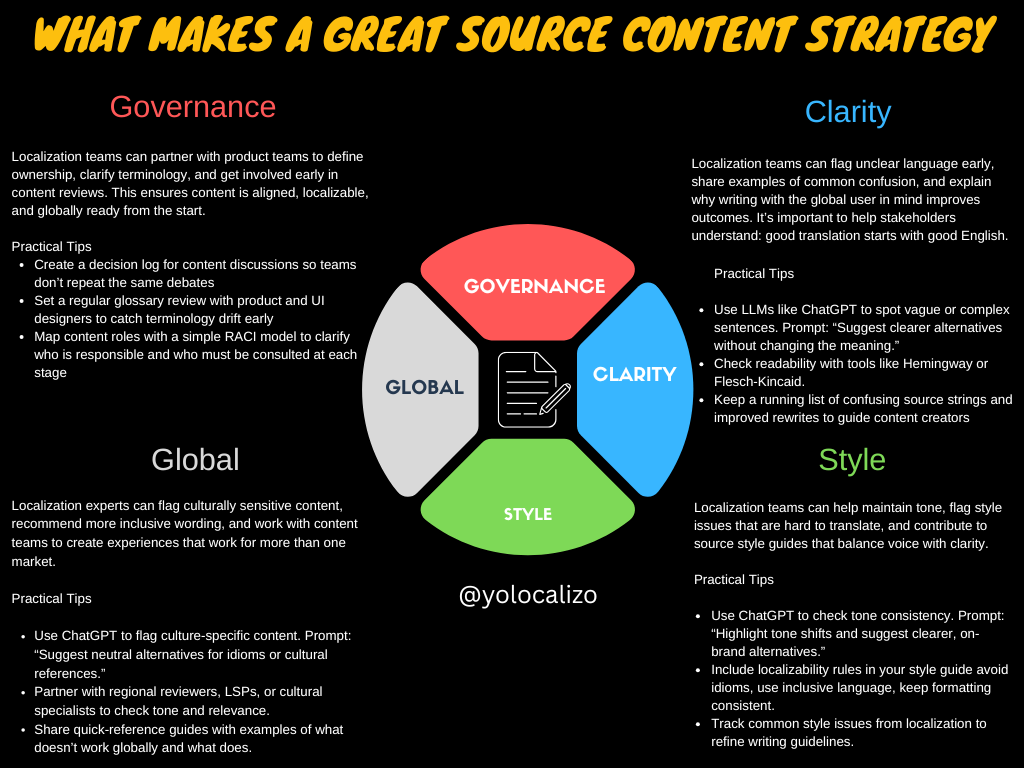
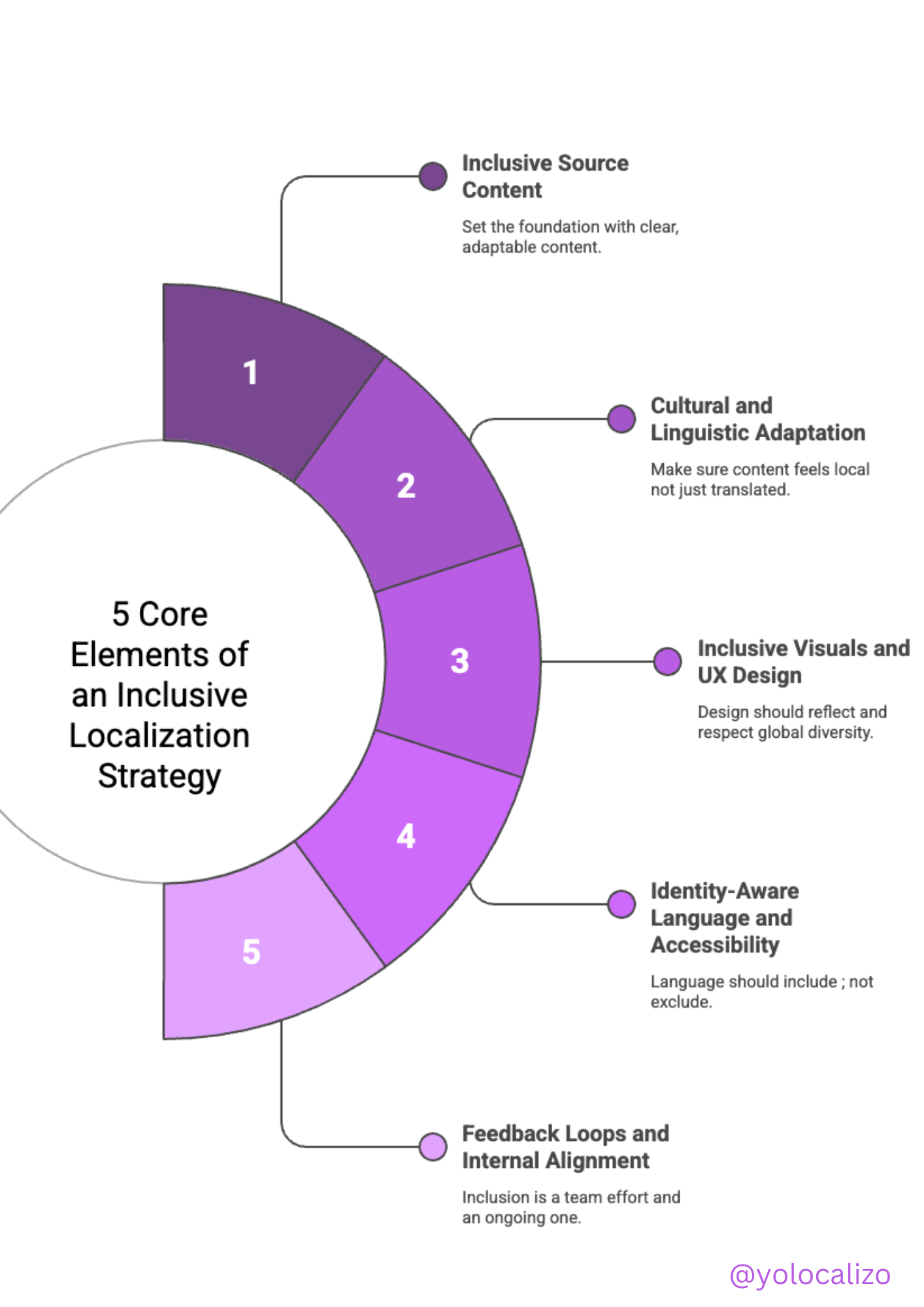
This feels like a pivotal moment. Localization teams are being asked to support more markets, move faster, use AI responsibly, and show impact, not just output. Expectations are higher than ever, but many teams are still trained mainly for execution. We are strong at delivering localization work, yet we often struggle to move from output to outcome and to clearly explain the impact of what we do.